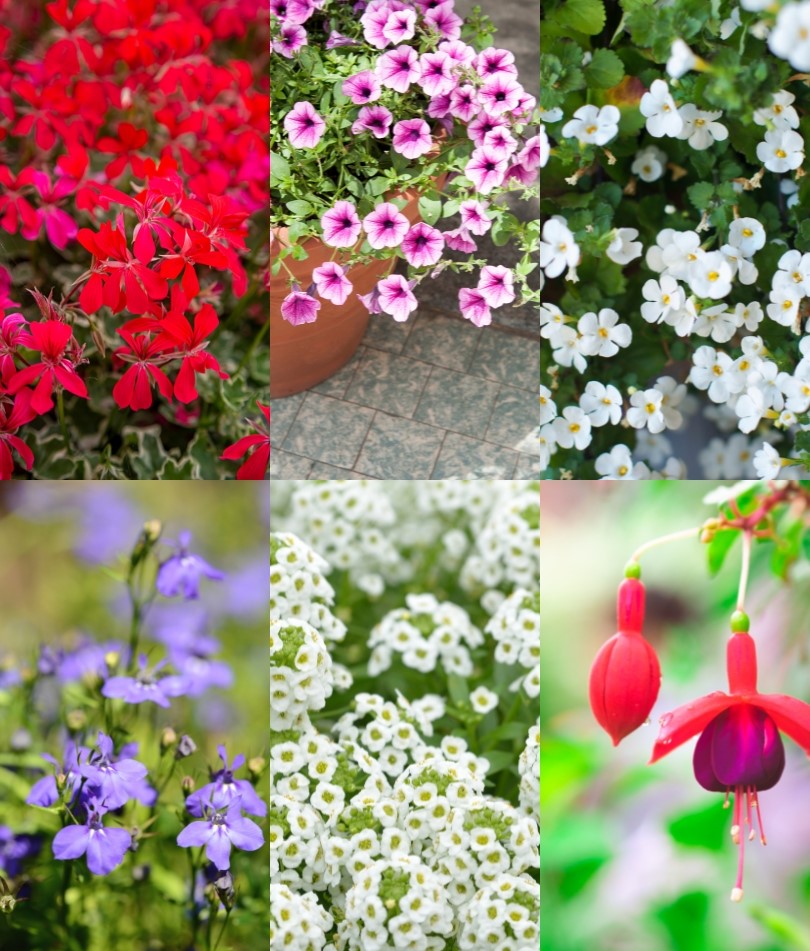
The Art and Science of Hanging Baskets: A Guide to Creating Stunning Displays
AUGUST 9, 2024
Hanging baskets are a versatile and elegant way to add beauty and colour to any outdoor or indoor space. Whether you're looking to brighten up a porch, patio, balcony, or even a small urban garden, these floating gardens can bring life and vibrancy to areas that might otherwise go unused. This guide will delve into the art and science of creating stunning hanging baskets, from plant selection and design tips to maintenance and seasonal care.
Choosing the Right Plants
The first step in creating a beautiful hanging basket is selecting the right plants. When choosing plants, consider factors such as sunlight, water needs, and the overall aesthetic you want to achieve. Here are some popular plant choices:

1. Trailing Plants:
These plants are essential for hanging baskets as they cascade over the edges, creating a lush, full look. Examples include:
- Petunias: With their vibrant colours and prolific blooming, petunias are a favourite.
- Ivy Geraniums: Known for their trailing habit and colourful flowers.
- Bacopa: Small, delicate flowers that thrive in sunny spots.
2. Filler Plants:
These add bulk and fill in gaps between the trailing and upright plants.
- Lobelia: Small, vibrant flowers in shades of blue, purple, and white.
- Alyssum: Fragrant clusters of tiny flowers that attract pollinators.
- Fuchsia: Perfect for shaded areas, with striking, pendulous blooms.
3. Upright Plants:
These add height and structure to the basket.
- Dracaena: Spiky foliage adds a dramatic, vertical element.
- Begonias: Large, showy flowers that thrive in partial shade.
- Coleus: Known for its colourful foliage, adding texture and contrast.
-
Designing Your Basket
The key to a stunning hanging basket is balance and harmony. Consider the following design principles:
- Thriller, Filler, Spiller: This classic formula involves using a "thriller" plant as a focal point, surrounded by "filler" plants, with "spiller" plants cascading over the edges. For example, you might use a tall dracaena (thriller), with lobelia (filler) and ivy geraniums (spiller).
- Colour Coordination: Choose a colour scheme that complements your outdoor space. Monochromatic baskets, featuring varying shades of one colour, can be elegant, while a mix of contrasting colours can create a vibrant, eye-catching display.
- Symmetry vs. Asymmetry: Symmetrical designs offer a balanced and formal appearance, while asymmetrical arrangements can be more dynamic and naturalistic.
-
Caring for Your Hanging Basket
To keep your hanging basket looking its best throughout the season, follow these care tips:
- Watering: Hanging baskets tend to dry out quickly, especially in sunny or windy locations. Water them thoroughly, ensuring that water reaches the roots. During hot weather, you may need to water daily.
- Feeding: Regular feeding is crucial for maintaining healthy, blooming plants. Use a balanced, water-soluble fertiliser every two weeks. For blooming plants, a high-potassium fertiliser can promote more flowers.
- Pruning: Regularly deadhead spent flowers to encourage new growth and maintain a tidy appearance. Trim back any overgrown or leggy plants to keep the basket looking full and balanced.
-
Seasonal Transitions
One of the joys of hanging baskets is that they can be refreshed throughout the year to reflect the changing seasons:
- Spring: Start with cool-weather plants like pansies, violas, and snapdragons.
- Summer: Transition to heat-tolerant plants such as petunias, marigolds, and verbena.
- Fall: Replace summer plants with autumnal varieties like chrysanthemums, ornamental kale, and trailing ivy.
- Winter: In mild climates, consider using evergreens, winter pansies, and hardy herbs. In colder regions, you can create a winter basket with festive decorations like pinecones and holly.






